Discover Lisbon in one day with our expert guide. Explore historic landmarks and picturesque viewpoints, taste local cuisine and wine, and feel the atmosphere of an old European city.
Key Takeaways
The capital of Portugal offers a blend of rich history, unique architecture, and diverse attractions to be seen in tour to Lisbon. The colorful streets and iconic landmarks reflect the city's vibrant atmosphere.
- Avenida da Liberdade: This picturesque avenue symbolizes Portuguese elegance, being a perfect spot for leisure walks.
- Praca Rossio: The architecture of Rossio Square makes a stunning impression with its majestic buildings, being a perfect starting point for exploring the city's cultural heritage.
- Rua Augusta: The street is located right on the way from Praca Rossio to Comercio, attracting visitors with its colorful buildings, shops, and the iconic Arc de Triomphe.
- Praca do Comercio: This grand square is the core of Lisbon's trade with breathtaking views of the Tagus River and the 25 April Bridge.
- Chiado: The district with extensive cultural significance, and vibrant atmosphere with charming cafes, bookshops, and theaters is a must-visit spot to feel the cultural essence of Lisbon.
- Alfama: This district is safely kept till our times, making a strong impression on the visitors with its medieval charm.
- Time-Out Market: The place is a pure paradise for foodies, featuring a variety of restaurants with authentic Portuguese cuisine. The place is highly recommended to visit in Lisbon day trip by locals
- Pink Street: For locals, this area is a "red light district," in the past. But nowadays Pink Street is a trendy nightlife destination with numerous bars and clubs.
- St. George Castle: St. George Castle is one of the main symbols of Lisbon’s history with a panoramic viewpoint of the city.
- Belem: The iconic landmarks of Belem Tower and Jeronimos Monastery, which are the symbols of Portuguese heritage and culinary delights, are located here.
- Authentic Cuisine: Local delicacies like Pasteis de bacalhau, and iconic desserts like Pasteis de Belem are separate pleasures and must-try spots of trip to Lisbon to create the full impression of Lisbon.
Even a day trip to Lisbon can create an unforgettable impression of the city if to follow the advice of real connoisseurs of Portugal. A memorable experience for first-time visitors is guaranteed
The Most Significant Landmarks of Lisbon for One Day Trip
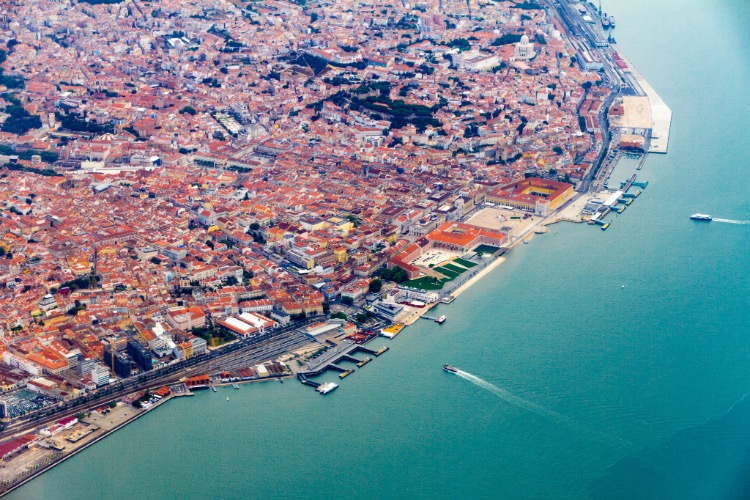
Lisbon, the capital of Portugal, has a rich history, unique architecture, and a long list of remarkable attractions. The first thing all tourists see in Lisbon is an incredible combination of the spirit of an old city and a modern part, while bright trams circle around colorful fairy-tale houses along narrow streets. But this is not the only thing surprising in the Portuguese capital.
No need to try to visit all the landmarks in one day and run through all the museums. It’s better to try a little of everything, and then come back again. You can do it on your own, or get a perfectly created experience to see the best parts of Lisbon with us.
After reading our review, you will find out what you need to see in Lisbon first. We included in our rating those attractions of Lisbon that are recommended by both guides and local residents. Every tourist should see them with his own eyes.
1. Avenida da Liberdade
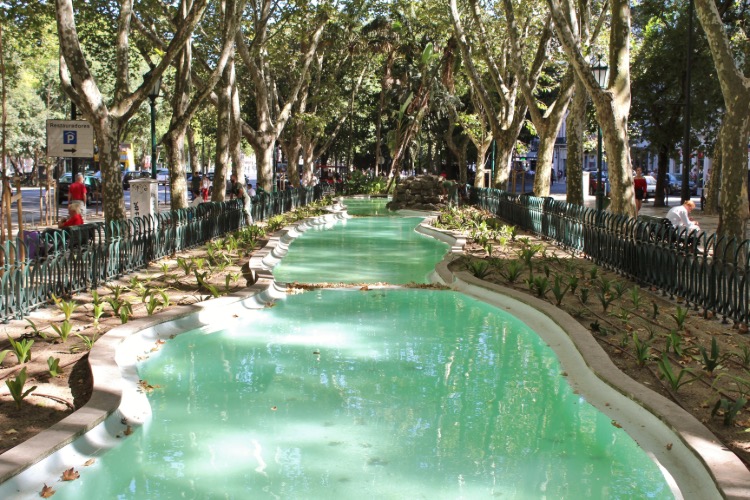
This is the main avenue of Lisbon, ideal for walking, which the residents consider the most beautiful in the city. Today, it is a wide boulevard paved with Portuguese tiles, with fountains, sculptures, and street cafes in the shade of trees. Before its construction in 1764, there was a pedestrian promenade called Passeio Publico. Originally, the place was surrounded by walls and gates, through which only members of high society passed. However, in 1821, by order of King João VI l the walls were removed to make Promenade.
In the 1830s and 1840s, the promenade was rebuilt by the architect Malaquias Ferreira Leal, who added new sculptures and fountains to the composition. One more reconstruction happened in 1879 after which an avenue became similar to the Champs Elysees in Paris. Nowadays it’s the center of various holidays, parades, processions, and rallies.
The avenue connects Restauradores Square and Marques de Pombal Square, in the center of which stands a bronze Marquis.
Insider tip: Here you can not only take a quiet walk but drink a cup of coffee in one of the street cafes as there are a few fancy coffee shops. Additionally, find time in your Lisbon, Portugal, tour for shopping, as here are located the boutiques of the world’s famous brands.
2. Praca Rossio
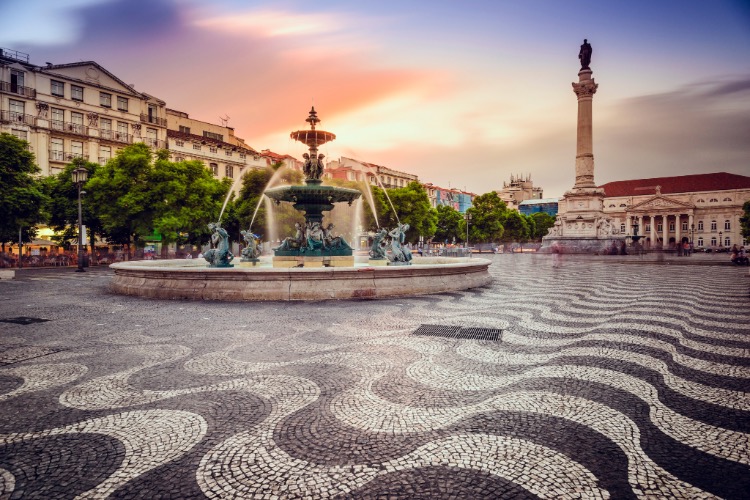
Praca Rossio, 166 meters in length and 52 meters in width, is the center of the city, its heart where visitors and locals gather before going for a walk around Lisbon or having dinner at one of the many restaurants.
When you are in the square, you get the feeling of a wide open space framed by majestic buildings. In the center, there are two fountains made in France from bronze and installed in 1889.
Officially, the square is called Don Pedro IV, but the residents continue to call it in the old manner. On one side of the square is the National Theater of Maria II, opened in 1846. In the 15th century, the Estaus Palace was located on this site, intended for the residence of foreign ambassadors and people who served the king but did not have their own housing in the city. A little later, the building passed into the hands of the Inquisition, which occupied it until 1755.
In the center is a statue of Don Pedro IV, the twenty-eighth king of Portugal and the first Emperor of Brazil. The pedestal was installed in 1870, its height is 27.5 meters. At the corners are four allegorical female figures that symbolize Strength, Justice, Wisdom, and Temperance.
Insider tip: The square is lined with black and white bricks in the shape of waves. Everyone can feel the 3D effect as part of Lisbon day trip. They say that this is an idea for the adaptation of sailors who came ashore.
3. Rua Augusta

The Rossio Square is connected with Commerce Square by Rua Augusta, the main street of Lisbon's Baixa Pombalina district. It’s a modern social space with many historical shops and shops, cafes, and restaurants to suit every taste.
The Pombalino-style buildings give the street are the main symbols of the era when Lisbon rose from the ruins after the Great Lisbon Earthquake of 1755. A small isthmus, no more than twenty steps long, connects the two main Lisbon squares: Rossio and Figueiro.
Tourists here will be greeted by wonderfully beautiful mosaic sidewalks, nice outdoor cafes, and an abundance of boutiques of international and local brands, artists, and musicians.
On both sides of Augusta Street, there are the colorful facades of ancient mansions, and its beginning is marked by the pompous Triumphal Arch with a mass of incredibly natural allegorical statues, an ancient clock, and, as usual in Lisbon, an observation deck.
The street is full of all kinds of shops, wandering performers, musicians, and painters. Here you can buy various souvenirs, and traditional jewelry, and then relax in one of the cafes while the artist paints your portrait.
Insider tip: Don’t miss an observation deck as it’s not the most famous one, so most of the tourists who travel to Lisbon, Portugal, skip it, leaving a lot of space for the photoshoot without crowds.
4. Praca do Comercio

Commerce Square, which is also often called the Trade or Palace Square is the center of the cultural and social life of the city.
Praca do Comercio in Lisbon is one of the largest squares in Europe. Once upon a time, the development of the city began with it. Here, near the Tagus River, the most important city institutions were located, including the royal palace of Ribeira. That's why it is sometimes called Palace Square.
In 1755, an earthquake that completely changed the appearance of Lisbon, also wiped out the Ribeira Palace. Today, the square is worth a visit for the beautiful view of the river and the 25 April Bridge. The square also features an elegant Triumphal Arch, one of the symbols of Lisbon, decorated with bas-relief statues.
In the history of the Portuguese royal family, the Praca do Comercio can be marked as a black page. The penultimate Portuguese king and his heir were killed there by the revolutionaries. And two years later, the party to which the killers belonged completely overthrew the Portuguese monarchy.
In the place where the ruined palace was, you can see buildings with arcades. On the south side of the square, there are two square towers. In this place, the visitors can enjoy a beautiful view of the Tagus River, and get to the river by going down the stairs.
Insider tip: In one of the buildings, there is a cafe that is already three centuries old as it was opened in 1782 and is considered the oldest in Lisbon. Don’t miss your chance to visit it as part of one day in Lisbon.
5. Chiado
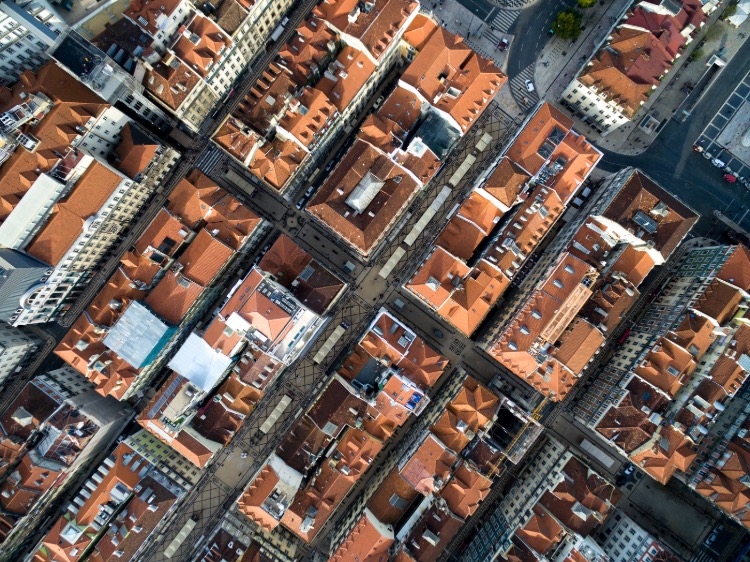
Chiado is located in the heart of Lisbon, between Bairro Alto and the center of Baixa Pombalina.
Known for its bustling streets and Art Nouveau buildings, this eclectic area is home to some of Lisbon's best cafés and restaurants. Take a walk here and discover why the area is culturally and historically significant. Most of the buildings in Chiado date back to the 1700s, but were destroyed in a fire in 1988. Renowned Portuguese architect Alvaro Siza Vieira redeveloped the area in the 1990s, creating a mix of new and restored buildings.
Apart from the old ruins of the Carmo church and monastery, which is now a popular museum, visitors enjoy Chiado's cosmopolitan atmosphere with charming bookshops, the National Theatre, cozy cafes, and delicious eateries.
To get to the Chiado district, you need to turn off the main street. The bohemian quarter of Lisbon will win your heart with its beauty and dynamism at first sight.
Insider tip: Of course, you can go for a walk in the Chiado district of Lisbon on your own or with a guidebook. But this way you risk missing all the most interesting things, passing by the most interesting attractions and objects. To see the best places and locations, visit art galleries, theaters, and antique shops, contact us.
6. Alfama

One more historical district which can't be skipped on Lisbon trip is Alfama. It's the oldest part of Lisbon which is safely keeping the treasure of the old heritage of Portugal. Alfama was the only area that managed to survive the earthquake in 1755 and preserve its medieval spirit to this day. The entire area is located on rocky hills and consists of small narrow winding streets, along which you can walk endlessly. This place can easily be called the “soul” of Lisbon.
To this day are safely kept the labyrinths of narrow streets paved with cobblestones, as well as many colorful buildings made in the traditional Portuguese style and decorated with multi-colored azulejo tiles. By discovering the Alfama district in Lisbon, you can take a real trip back in time and see the city as it was before the earthquake.
A few centuries ago, Alfama was considered a place for living for the poor. Most dock workers and sailors lived here. For a long time, the area maintained its gloomy status. Nowadays, not a trace remains of the bad reputation. Modern Alfama is a fashionable and quite lively place in the city, which has acquired a new look, but has not lost its flavor and rich historical and cultural heritage.
While walking through the streets of the area and its surroundings, you will learn a lot of interesting and educational information about the main attractions of Lisbon.
Insider tip: Alfama is a place with numerous Fado houses, the perfect spot for the first acquaintance with this Portugal traditional music performance.
7. Time-Out Market

Time-Out Market in Lisbon has more than 30 restaurants where you can try a little of everything: fish, meat, burgers, sushi, cakes and ice cream.
Mercado da Ribeira, an old market near the Tagus waterfront, has been reborn thanks to an ambitious project by TimeOut magazine. The building, which occupies approximately 10,000 m², was renovated in 2014 and now houses several dozen restaurants and cafes, both chain and independent ones.
The market has already gained enormous popularity among both tourists and local residents. Many compare it to the San Miguel market in Madrid.
The first floor is a gastronomic one, it was opened in May 2014. The second floor is designed for concerts and events, with a hall for 300 seated/600 standing places, and was opened in 2016.
Time-Out Market with its traditional shopping stalls with fish, fruits, and flowers is a great place to have a snack or dinner in Lisbon day trip as there is a huge variety of options for any taste.
Insider tip: The market is closed on Sundays, so plan your visit here on other days of the week to get an opportunity to indulge in all the culinary delight of Portugal.
8. Pink Street

Rua Nova do Carvalho is one of the busiest streets in Lisbon and the center of the city's nightlife. The street has been mentioned several times in major publications such as the New York Times. The place is very popular among tourists, but also among the local population.
For centuries, this place was known as Lisbon's "red light district", especially popular among the sailors. Previously, there were numerous brothels and gambling establishments here, as well as rivers of alcohol flowing, which is why people tried to avoid this street.
However, as time passed, changes for the better occurred, and the bad reputation was left behind. Today it is one of the most fashionable and visited streets for Lisbon trips. It is indeed painted pink and is closed to traffic.
Don’t miss your chance to come here and have a walk. Rua Nova do Carvalho is not all pink – most of it is covered with ordinary asphalt. As for the site, which is a landmark, it is located between two streets crossing it, coming from the embarkment.
Insider tip: Come here in the evening for a promenade, relax in the most famous bars, and spend time in the best nightclubs in the city.
9. St. George Castle
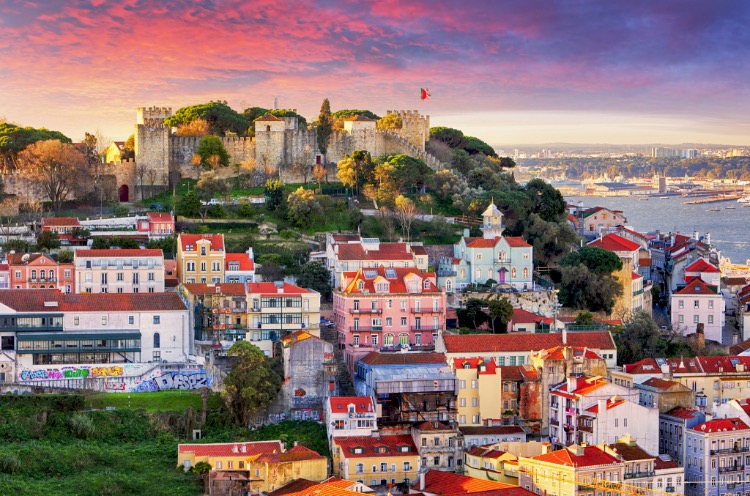
One of the main attractions for Lisbon, Portugal, tour, is the Castle of St. George (Castelo de Sao Jorge). It was from here that the centuries-old history of this city began. To save time on coming here it's highly recommended to take a taxi or use our service. We know the best routes to create an unforgettable impression of Lisbon even if you have a short time in the capital of Portugal.
There is no clear fact about how many years ago this fortress appeared since the chronicle is kept only from the moment of the conquest of Spain by the Romans. However, according to existing history, the first settlements arose here in the 7th century BC.
The fragments of medieval battlements are kept among the olive trees and oak which you can see while walking through the inner parks of this magnificent landmark of Portugal.
The return of Vasco da Gama from sea voyages, as well as various significant events for the kingdom, were celebrated here very magnificently. The entire St. George's Castle is one large observation deck.
Insider tip: While being here, don’t forget to visit the castle's hidden terrace, known as the Camera Obscura. This hidden gem creates a fascinating optical illusion of Lisbon in real-time mode.
10. Belem
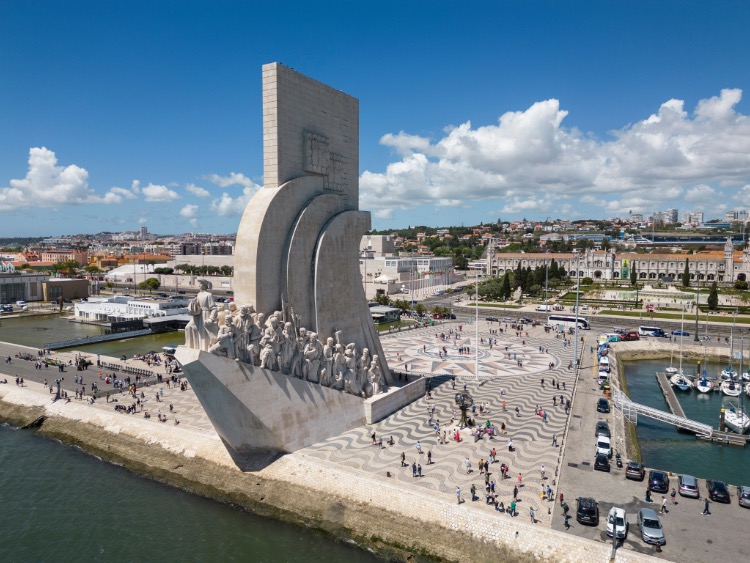
After seeing all the major landmarks of the central part of Lisbon, it's highly recommended to go to Belem. This old district of Lisbon houses numerous famous attractions, easily accessible on foot. But to get there and save time the best idea is to take a taxi or contact us. We have carefully created a detailed half-day tour of Belem to show it in all its beauty and prosperity.
The name itself arose from another famous name - Bethlehem. That is, these are not only ancient quarters but also places sacred to every Portuguese. Here's a list of must-see places:
- Belem Tower
A fortress is not only a fortification structure, it also has historical significance. It was built when the sailor and discoverer Vasco da Gama returned from his great travels.
You will have to climb a steep and rather narrow spiral staircase to get on top. The flow of visitors is regulated by special traffic lights.
- Monument to the Discoverers
Portugal is a country that boasts great travelers. The idea of a monument that would glorify brave sailors for centuries arose in the 40s. 20th century. But it could not be finished at that time, so the monument was built only in 1960.
- Jeronimos Monastery
And here is the pearl of the Belem region - the Jeronimos Monastery. This name simply indicates that this monastery was owned by representatives of the monastic order of the Hieronymites.
- Pastel de Belem
Summer cafes are crowded with tourists. They sell incomparable and unique baskets of puff pastry with custard, invented by the Hieronymite monks themselves.
- The Embankment
The most beautiful promenade starts from the monastery and ends with Torre de Belem. However, if we take the pedestrian promenade itself, it starts from the docks at Alcantara station where the cruise ships dock.
Insider tip: Belem is a perfect spot and final touch to the day around Lisbon. The old boat sheds have been converted into excellent restaurants, where the price of dinner for two with a bottle of rose wine is 50-70 euros.
Where to Try Authentic Portuguese Cuisine in Lisbon?

Lisbon has a huge variety of restaurants to suit every budget.
In most tourist areas authentic Portuguese cuisine is not so widely presented, and most of the dishes are adapted. To experience real Portuguese cuisine, it is better to visit restaurants in non-tourist places. It is especially recommended to stop for lunch at Tasca, where you can fully immerse yourself in the atmosphere of the city and feel like a local resident.
For gourmets, Lisbon is a dream come true. What to eat in a city by the ocean?
- Of course, a variety of seafood dishes: baked octopus, shrimp, lobsters, sardines, oysters, mussels, and much more.
- Don’t forget about dishes made from cod, beloved by the Portuguese. In the local kitchen, it’s known as “bacalhau”. It’s recommended to try Pastel de bacalhau (cod croquettes) or Bacalhau a bras (stewed cod with potatoes, onions, and eggs).
- The local desserts, such as the famous Pastel de Belem (or Pastel de Nata) are the number one in Portugal, and a must-try for the visitors.
For dinner on your first day in Lisbon, you should choose a restaurant with Fado. It's a great final touch at the end of the day. Fado is a sad and emotional song sung in Lisbon's houses and taverns. You can't experience Lisbon and feel the soul of Portugal without Fado, so it’s worth visiting at least once.
Insider tip: Portuguese food is delicious, but if you visit regular restaurants, it is important to remember that most of them are open during lunch (before 15-00) and after 19-00.
Summary
On a one-day trip to Lisbon, you can get acquainted with the main attractions of the Portuguese capital, exploring the city with our guide. But be ready for an active day, filled with new impressions at every step. Lisbon is a perfect starting point to dive into the rich history and culture of Portugal, where each attraction has its charm. From the graceful Avenida da Liberdade to the medieval Alfama, the route across the city is planned to show the brightest parts of Lisbon.
The itinerary of Lisbon trip includes a carefully selected list of Lisbon's most prominent landmarks to guarantee an unforgettable experience for first-time visitors. Undoubtedly, the visit to Lisbon wouldn’t be complete without savoring its authentic cuisine. From fresh seafood dishes to the unique Pastel de Belem each sample offers a unique cultural involvement. For a more extensive experience, don’t miss the dinner accompanied by the melodies of Fado music.
Even a short stay in Lisbon can leave an unforgettable impression and a strong wish to turn back because of the captivating atmosphere of the city on your unforgettable journey through the capital of Portugal.
 English
English
 Português
Português
 Español
Español
 Français
Français




